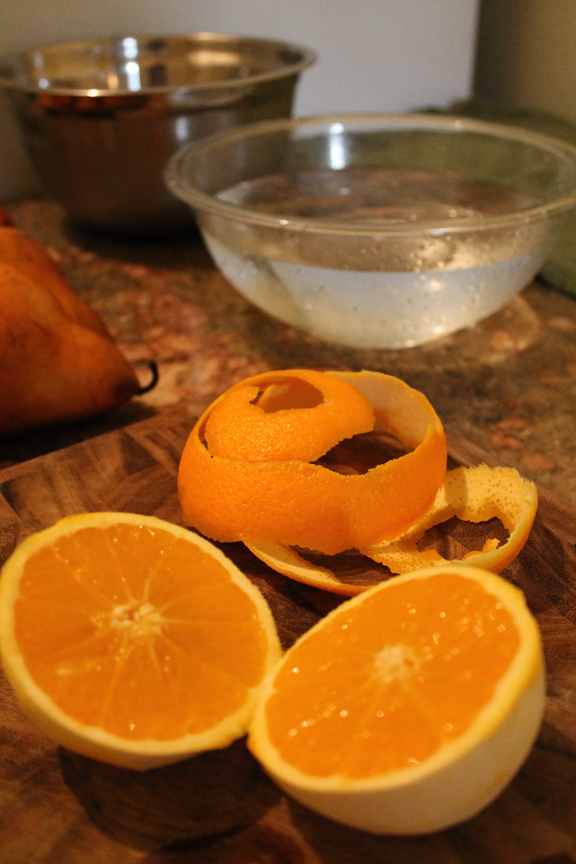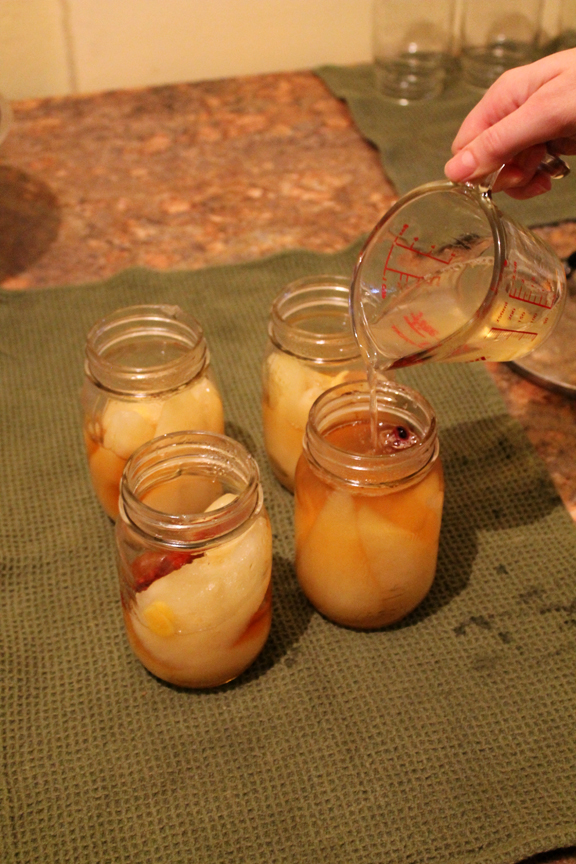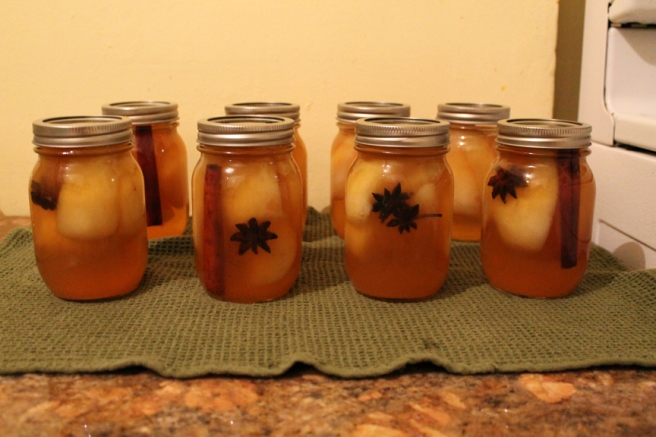My mother’s grandmother was a tobacco farmer out in Brantford, Ontario, and although I never met her, my mother is full of stories about her amazing cooking and baking. She ran a bit of a homestead, growing many of her own fruits and vegetables right on her land. She may have passed before my time but she left behind jars and jars of canned pears, which my family and I continued to eat for years (a testament to her skills at preservation!). The jars of pears were kept in the cool darkness of our basement, and as the years went on and the pear reserve dwindled, they became sacred in a way. Here were these jars of preserved life; small monuments to attest for my grandmother’s existence, providing continued nourishment for her family long into her afterlife.
Drawing inspiration from my grandmother’s perfectly preserved pears, I wanted to attempt the canning process myself, but with a slight twist. Her recipe was simple and traditional — just the humble pear preserved in a simple syrup. Now that fall has certainly settled in, I find myself craving baked goods and warm cups of tea, but how to translate that to pears? As I was rummaging through my cupboards looking for inspiration, my nose detected this amazingly rich and spicy aroma which turned out to be a homemade chai blend that my boyfriend had concocted the winter before. So I decided to experiment. I would make one batch of pears that were slightly more traditional with a lemon, ginger, and cinnamon syrup, and another batch with an orange syrup infused with the chai spice. Oh, and did I mention both would be spiked with brandy? Because, why not, right?
Having never preserved anything before, I started the lengthy process with a sense of fear in my heart. Fear is not an over exaggeration. As I set up my jars and prepared my towel lined canning station, I realized that my pot was too small to entirely cover my jars during the boiling and sanitizing process. The internet gods mentioned that I needed at least an inch of boiling water above the lids. Would my short and chubby pot suffice? Or would I be unknowingly preserving tiny batches of botulism to be given lovingly to family and friends come the holiday season? Several semi-frantic calls with my mother later revealed that my pot would be fine as long as I filled it up to the rim of the jars and kept the lid on to create steam. Thanks mom!
After boiling all of my jars for about twenty minutes each, I took them out of the pot with my sterilized metal tongs and placed them upside down on a towel to dry. The next step was to process all of my pears. Since I didn’t want them to discolour while they were waiting to be boiled, I created a few water baths for them, spritzing a bit of orange juice in bowls of cold water and making sure to reserve the orange peel to be used later in my syrup. I then started to wash, peel, and quarter my eight pounds of pears. This took a long time!
After all the pears were nice and settled in their water baths, I started working on my first batch of syrup. For this I thinly peeled and sliced a knob of ginger, peeled the zest of a lemon, squeezed the juice into a measuring cup (I got just over a quarter of a cup) and topped it off with water until it was a full cup. After pouring this into a large pot I added another cup and a half of water, three cups of sugar, my ginger and lemon zest, and two sticks of cinnamon. The syrup needs to be brought to a boil and then simmered for about ten minutes before adding the pears. After the pears have been added, it is then brought back up to a boil and the pears only need to be in there for about five minutes, because any longer and they start to go soft.
The pears are then placed into the jars, and a quarter cup of brandy is added to each. I topped them up with the remaining syrup and screwed on the lids. I made sure not to do it too tight because they are going to be put back into the giant pot of water, boiling for another twenty minutes, and the built up pressure needs to be released.
For the orange and chai spice batch, I followed the same basic procedure. I peeled the zest off of another orange, and squeezed the juice into a measuring cup. I got about a half cup of juice and topped it off with water until I was at a full cup. I added this to my pot, along with another cup and a half of water, three cups of sugar, the orange zest from two oranges, a handful of star anise, and the chai spice blend secured in a tea ball. My chai blend consisted of cardamom, cloves, cinnamon, and a bit more star anise.
After boiling the pears in the syrup, placing them in their jars, adding the brandy and syrup, and boiling for an additional twenty minutes, all was successfully preserved! After leaving them on the counter for 24 hours, I tightened the lids and then placed them in the darkness of my cupboard. I can’t wait to try them in a month from now once all of the delicious brandy and syrup has been absorbed, either on their own, or with some vanilla ice-cream.











